Dec 16, 2015Recently, people who work for small companies and nonprofits have been asking RFID Journal: Can I use RFID to track my assets? Those assets range from office equipment to art in a gallery and files in a dentist's office. These potential users have read about large enterprises using RFID to cut costs and improve operations and want to know if they, too, can use the technology to manage their inventory and improve efficiencies. Some even ask: Can I buy some tags and a handheld reader and do it myself?
To find out, RFID Journal spoke with RFID providers and small organizations that are using the technology to track their assets. They all say now is a good time for small companies to consider RFID for asset tracking, because costs have come down and the technology has improved. Most small businesses can use EPC Gen 2 passive ultrahigh-frequency RFID tags and portable reading devices.
Experts are quick to warn there are no shortcuts. Like any company deploying RFID, a small organization needs to develop a business case and examine processes. And many companies will need to hire outside help, at least to integrate the RFID data with their business applications and databases.
But despite the challenges, small companies that have deployed RFID asset-tracking solutions tout the benefits. Stoll & Co., for example, a small repair shop in Dayton, Ohio, is using a passive UHF RFID solution to manage the roughly 12,000 watches it handles monthly (see Small Repair Business Streamlines Processes). The solution, developed with systems integrator CDO Technologies, has improved productivity and customer service, says owner Ron Stoll. While Stoll says he can't recall how much money he has spent on RFID, he feels it doesn't matter:
"Today, I couldn't imagine running our business without those little RFID chips." He suggests other small businesses contemplating an RFID deployment should not "look at what it costs to do these projects. Look at how much it can save you or how much more efficient it can make your business, and how it can allow your business to grow."
Establish a Business Case
Small businesses may have fewer assets to track than large companies do, but they also have fewer employees to do the job. "No one has time to really look for items," says Robert Zielinski, CDO Technologies' director of commercial marketing. RFID can speed up the process of collecting data about tagged items for inventory purposes, he says. It also can help save unnecessary spending on buying new equipment to replace inventory that is considered lost but may actually be on site somewhere.
Take, for example, the Ohio Department of Veterans Services, which operates two long-term care facilities for honorably discharged vets. To provide information for annual state audits, the organization needs to track some 4,000 assets, including beds, computers and lawnmowers, says Bob Day, fiscal officer and payroll administrator. It had been tracking these assets using bar codes and then manually recording the information in a database. Every year, an auditor and a facility staff member would walk the floors and grounds, trying to locate items on the list and then verify the information. "It was very cumbersome and labor-intensive," Day says, with errors occurring annually, mostly because they were unable to find assets listed in the inventory database.
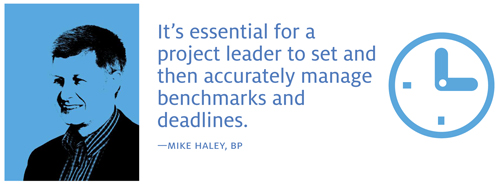
"We did some research into RFID a few years ago, but it was cost-prohibitive at the time," Day says. Since then, technology costs have declined, and the organization reconsidered an RFID asset-tracking solution. CDO Technologies proposed a passive UHF RFID system, and Day calculated that an investment of less than $100,000 would deliver a return.
The deployment, which went live earlier this year, will deliver long-term savings in the reduction of labor hours of existing staff and the elimination of at least one position, Day says. Now, in addition to conducting a full-fledged inventory annually, the Ohio Department of Veterans Service can check asset status quarterly, as well as randomly, and easily update any changes to ensure audit lists are accurate.
A few years ago, Ruth Koup, founder of Dress for Success South Central PA, also explored using RFID to manage inventory. The organization is a nonprofit affiliate of Dress for Success Worldwide, which provides women with professional attire and support to help them achieve economic independence. Koup wanted to track items at the organization's three locations and in its mobile unit, which together span six counties. "Each year on our annual audits, inventory was our biggest nemesis," she says. It took hours to reconcile common variances that happened when, for example, a volunteer manually recorded that a client had received a sweater when the item was listed in the inventory database as a jacket.
At the time, Dress for Success South Central PA depended on an in-kind model for access to RFID hardware and services, and the project fell apart when it encountered complications integrating RFID data with existing systems. But Koup's vision for using RFID didn't falter. Auditors recommended a bar-code solution to replace manual processes, but that wouldn't have helped locate items that had been moved around, such as items inadvertently misplaced by volunteers, and it would have required too much labor. So Koup spent the next couple of years working with IntermixIT, an IT consultancy in Harrisburg, Pa., to upgrade the organization's computer system so it could support a future RFID effort.
In 2013, Koup was ready to try RFID again, but this time she wanted to purchase hardware and services rather than depend on the in-kind model. "So the pitch to the board [to get RFID funding] was that reconciliation for one audit could cost $45,000 in labor/volunteer hours, and if we had that to invest in RFID we could save time and money, meet auditing expectations and be more efficient, including being better at sharing inventory across locations," she says. The organization's York boutique, for instance, might receive a donation of 30 size 22 suits, and its Harrisburg site might not get any. With RFID, each site could tag items when they were received, and that information could be immediately available in the database for other locations to view and use to coordinate a share.
The pitch was also tied in to the launch of Tied to Success, which provides similar services as those for Dress for Success but for men transitioning from poverty or unemployment to employment. "It was a great opportunity because it was a smaller-volume program," Koup says, "and the boutique is right at the Harrisburg corporate office in a separate suite."
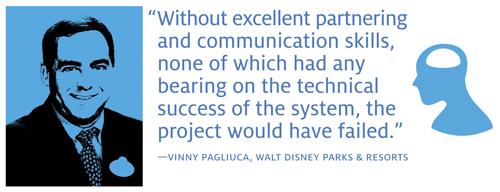
The RFID initiative was approved and deployed in 2014. The organization worked with systems integrator Advanced Mobile Group, which provided planning, implementation and support services. It used the Avery Dennison UHF RFID tags left over from the first effort and Motorola Solutions handheld readers. Information about each donated item, such as size and color, is linked to its unique identification number and stored in a back-end database. When an item is given to a client, an employee or volunteer uses a handheld to read the item so it can be deleted from the database.
The results? "In the 2014 audit, auditors for the men's program raved about how accurate it was and what a great solution it was," Koup says. During the past year and a half, the organization has worked to fully RFID-enable its women's program. December 2015 will mark the first full audit based on the inventory-management solution. "We're crossing our fingers that it goes just as well [as the men's program audit]," Koup says, adding she has every expectation that it will.
Meanwhile, Dress for Success South Central PA is expanding the RFID solution, installing fixed readers at all boutique sites between the back rooms and store floors. Koup expects that automatically tracking the flow of items will add to the return on investment. "Nothing bothers me more," she says, "than to have to go out and solicit or purchase items, and a month later I find a whole slew of what I needed in the first place but couldn't locate at the time."
Consider Your Resources
Small companies with small budgets may be hesitant to hire a systems integrator to develop and deploy an RFID solution. But most small companies are also short-staffed and don't have personnel who can invest the time into researching RFID technology and getting up to speed. It's important to consider your resources before deciding how to proceed.
"Tagging and tracking a few assets might seem simple, but there are always issues that occur in any implementation," says Steve Halliday, president of High Tech Aid and president of RAIN RFID. "The location of tags and readers can be a big issue from a physical point of view. Another area that can be an issue is the software that collects the RFID data and then interfaces with the user's back-end applications.
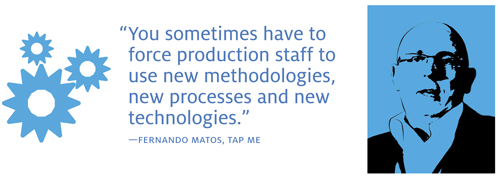
"Even though a small system typically costs less than $100,000—in some cases it has been around $50,000—we have found that many businesses have problems with the cost of the application and yet expect it to be fully integrated into their own system," Halliday says. "While some companies set out to implement RFID on their own, most need help from someone with experience. We still hear stories of companies that implemented RFID but saw no value from the implementation. In most cases, a good systems integrator can make sure the project expectations are set correctly and ensure the project is implemented properly and that it does provide the expected returns."
Day says the Ohio Department of Veterans Services' seven-person IT team could have taken on the asset-tracking project on its own, but "we would never be at the point where we are now as quickly." He relied on CDO to keep it from unnecessary spending that could easily have occurred if they'd tried to "reinvent the wheel." The organization followed CDO's tag recommendations—one tag for plastic devices, on-metal tags for metal equipment and tags that can withstand harsh environments for outdoor assets. CDO also developed software to interface with the RFID data collected with Alien Technology handheld readers and delivered to internal databases.
But the IT team will likely take on the next step of leveraging the RFID data in conjunction with its maintenance partner for a preventative maintenance program, Day says. "We can convert the data to Excel and generate reports around the age of each asset on a continual basis," he says, "so we can track when maintenance is due or even when particular assets need to be replaced."
Suits to Careers, the umbrella organization that includes Dress for Success and Tied to Success, doesn't have any in-house IT staff, so it relied heavily on outside help to ensure its RFID project began—and continues—in the right direction, Koup says. Currently, for example, IntermixIT and Advanced Mobile Group are working together to fix some glitches in synching RFID data from the York location to the corporate database.
Koup is also depending on Advanced Mobile Group to take the RFID solution to the next step. "Right now, it is more of an inventory system, but we also are trying to scale this into what could be something like a point-of-sale system," she says. Clients don't pay for the items they receive, of course, but "we'd have a receipt to tell us everything that is going out the door and that is merged into our database more easily than we are doing it right now," she adds.
Koup believes the RFID model Suits to Careers has developed could, at some point, be offered as a hardware-software-in-a-box solution that other nonprofits could adopt. "They can have the fruits of our labor," she says. In fact, she adds, "142 Dress for Success affiliate locations in 20 different counties will eventually require an inventory control and PoS system as they grow to be the size we are now, serving 2,000 women and 200 men annually." Even tech-savvy organizations sometimes need outside help.
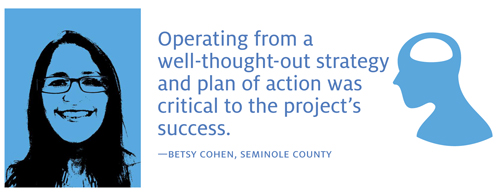
"RFID still isn't generally about just buying some tags and pulling a reader out of the box for plug-and-play operations," says April Carpenter, associate professor of management at Dayton's Sinclair Community College. Carpenter worked with students in the Supply Chain Management and RFID Certification Program, Paul Murphy, director of business services, Tim Borchers, manager of mail and logistics, and Travis Beetley, facilities manager, to develop an RFID solution to manage high-value items.
The college wanted to track items that students in various programs—automotive, culinary, dental hygiene, nursing and unmanned aerial systems—take from shelves. In addition, it wanted to track facilities equipment that is often moved to other locations to be calibrated or cleaned. Borchers called a tag vendor and wasn't sure how to respond when the salesperson asked him which of its 3,000 different types of RFID tags he wanted to use.
To learn about RFID asset tracking, the Sinclair team decided to first track gym equipment, which doesn't change location much but offered a good testing ground for researching tags that worked under a variety of conditions, including on metal, submerged in water and on a scoreboard mounted on the gym wall. There's a lot of work involved in figuring out what to tag first, what type of tag to use to get the best read rates, where to put the tag on the assets, even the best place for someone using a handheld passive UHF reader in an area where assets are located to get the best read results, Carpenter says.
Contracting with a systems integrator to do all that up-front tryout work might have cost the school $10,000 to $20,000, Carpenter says. The college relied on CDO to develop the software to connect the data from RFID reads into other databases and provide guidance during the planning phase. "But they let our students do a lot of the grunt work themselves, which saved Sinclair a lot of money," she says.
The solution delivered a significant return on investment, Carpenter says. "With bar-code tags, it would probably take an hour or an hour and a half to match equipment IDs with a spreadsheet," she explains. "My students got to the point where they could walk into the gym with an Alien Technology handheld reader, stand at the door, and within about one minute and twenty seconds get a count on all the tags. That's a huge time savings."
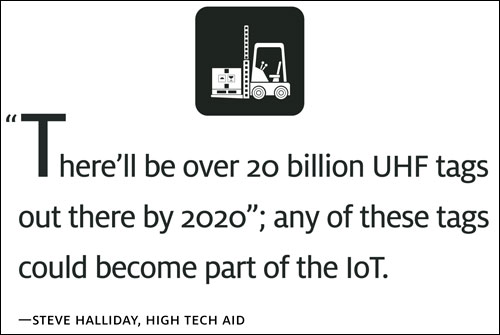
CDO will be writing software to link Sinclair's asset-management system to other databases the college maintains for asset life-cycle management, Carpenter says. But the college's IT staff will take it from there. "We have internal people who know enough about it that once we get the software integrations done, we can go to town," she says.
Plans for tracking more assets will be reviewed and considered for the next fiscal-year budget, Carpenter says. "We will have a new group of capstone students in January who can expand on the project started last spring by the other students," she says.
The services of programmers or systems integrators may be required when deployments move up the ladder, Zielinski says—perhaps, for example, tracking assets in real time using fixed readers. "A lot of that data may be being collected over a wireless network," he says. "Is the network beefy enough to handle that?"
Tools for Do-It-Yourselfers
B.I.G. Jewelry—whose business includes drop-shipping jewelry orders for a couple of dozen online sites—is using U Grok It's UHF RFID solution to track sample lines salespeople take to their showings at retail clients. "We can now use RFID to say what is in the bag they are taking, and when it comes back in, we can check that we gave out these 300 pieces and got back these 300 pieces," says Ari Ebrahimoff, B.I.G. Jewelry's managing director. "And if something is missing we can identify it very quickly."
The U Grok It solution is a handheld UHF reader that attaches to an Android or iOS smartphone or tablet to let users write to RFID tags and then read and search for those tags within a 6- to 25-foot range. The company provides sources for buying RFID tags. The Discover Grok application can handle functions such as taking inventory and locating specific items, says Laura Sankey, VP of sales and marketing. "People just want to pick something up, press a button and start finding their stuff," she says. More than 300 organizations—in industries ranging from livestock to cannabis operations, health care, transportation, trash services, rental shops, retail stores and server management—are in some stage of testing or implementing U Grok It, she adds.
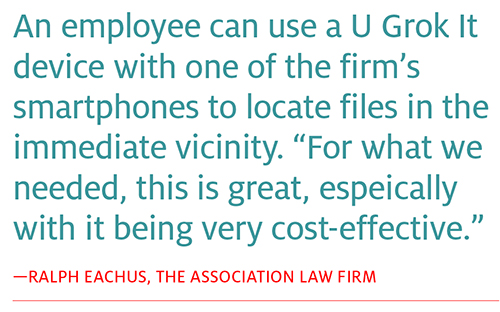
The Association Law Firm, in Orlando, Fla., which has roughly 25 employees, generates hundreds of thousands of collection, enforcement and other litigation and legal guidance files related to its representation of condos, homeowners' associations and timeshares. In March, the firm began using U Grok It to track and manage all that material. It purchased 10,000 tags, and it took file clerk Ralph Eachus approximately a month to tag all existing files.
It was a pretty simple matter, Eachus says, requiring a seamless import of the file information the firm maintains in a database—client and associated brief number, for example—to the Discover Grok app. Then, to identify each file, he found the file's corresponding entry in the Discover Grok app, pushed a button on the device to write a unique number to a tag, scanned the tag number into the system and attached the tag to the file.
Eachus discovered he needed to put some space between each file and tag and the thousands of other tags near the device, to avoid confusing the system about which tag to associate with the file. There also were a few software glitches at first, which he worked out with the U Grok It team. Since a June update, he says, "It's been smooth sailing."
The law firm now has processes in place so any new files are tagged as soon as they are created. Whenever an employee needs a file, he or she can use the U Grok It device with one of the firm's smartphones to scan for it in the immediate vicinity. "You're not going to turn it on and find a file across the office or in someone's briefcase in the hallway," Eachus says, "but for what we needed this is great, especially with it being very cost-effective."
Small contractor businesses—such as landscapers, restoration providers, and companies that provide equipment rentals and home medical device services—need to track assets as they move from warehouses to vehicles and job sites and back. To provide real-time inventory management, Invisi-Tag developed an RFID starter kit that includes a portable reader, an Android tablet, an enterprise inventory and checklist app, an enterprise cloud-reporting account, and 15 metal and 15 nonmetal tags. The company says it has more than 200 customers currently on the platform in different verticals.
"The contractor loads equipment and assets onto a vehicle, and our reader detects hundreds of pieces instantly and relays that information to the Invisi-Tag app on their mobile device," says Aminur Rahman, Invisi-Tag's senior engineer of electrical engineering.
"If the item is detected, it turns green on the software's checklist, or it remains red if it's missing or they're leaving it behind." The out-of-the-box solution, at $3,000 to $5,000, costs a fraction of what it costs to implement a custom RFID solution, he says. Its short-learning curve is another advantage, he says. Invisi-Tag helps users create a database of tags and trains customers' employees to use the app and apply the tags for the best read rates.
"The statistic is that contractors lose up to 10 percent to 15 percent of equipment every year," Rahman says. "We help contractors bring that 10 to 15 percent back to their bottom line."
Beyond Asset Tracking
While a number of small organizations are excited about deploying RFID for asset tracking, CDO's Zielinski advises them to think about how they can use the RFID data and the visibility it provides to change their business. "Ultimately," he says, "their limitations may be in their processes, not the technology."
Systems integrators can help small companies get beyond the mindset of doing what they always have done or know how to do. That way, he adds, they can benefit from the business-impactful intelligence RFID data provides.

